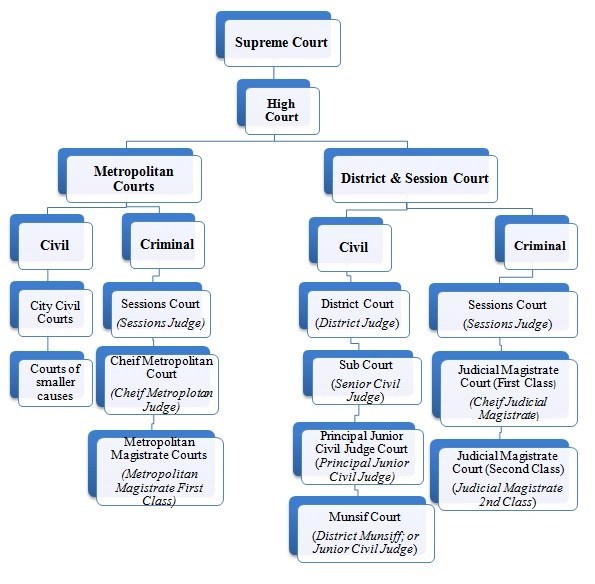Focus: GS-II Governance
Why in news?
- A supreme court bench made it clear to the States and Union Territories that the Second National Judicial Pay Commission recommendation to nearly triple that pay and allowances for subordinate Judiciary should be implemented ‘proactively’.
- The court said that financially self-sufficient subordinate judiciary was pivotal for its independence.
Hierarchy of Indian Judiciary

The provisions related to subordinate courts are provided in the 6th part of the Indian Constitution. Articles 233-237 deal with the subordinate courts.
District Courts
- The District Courts of India are established by the State governments of India for every district or for one or more districts together taking into account the number of cases, population distribution in the district.
- They administer justice in India at a district level.
- These courts are under administrative control of the High Court of the State to which the district concerned belongs.
- The decisions of District court are subject to the appellate jurisdiction of the concerned High court.
Subordinate Courts
- Subordinate courts are also known as village courts, Lok Adalat (people’s court) or Nyaya panchayat (justice of the villages), compose a system of alternative dispute resolution.
- They were recognised through the 1888 Madras Village Court Act, then developed (after 1935) in various provinces and (after 1947) Indian states.
- The model from the Gujarat State (with a judge and two assessors) was used from the 1970s onwards.
- In 1984 the Law Commission recommended to create Panchayats in rural areas with laymen (“having educational attainments”).
- The 2008 Gram Nyayalayas Act had foreseen 5,000 mobile courts in the country for judging petty civil (property cases) and criminal (up to 2 years of prison) cases.
- However, the Act has not been enforced properly, with only 151 functional Gram Nyayalayas in the country (as of May 2012) against a target of 5000 such courts.
- The major reasons behind the non-enforcement includes financial constraints, reluctance of lawyers, police and other government officials.
Control over Subordinate Courts
- This is an extension of the above supervisory and appellate jurisdiction. It states that the High Court can with draw a case pending before any subordinate court, if it involves the substantial question of law. The case can be disposed of itself or solve the question of law and return back to the same court.
- In the second case the opinion tendered by High court would be binding on the subordinate court. It also deals with matters pertaining to posting promotion, grant of leave, transfer and discipline of the members there in.
- High court has complete authority and control over its officers and employees. In this regard it appoints officers and servants to be made by Chief Justice or such other judge of High Court as the Chief Justice may direct. However the Governor of the state may by rule require that in such cases as may be specified in the rule no person not already attached to the court shall be appointed to any office connected with the court except after the consultation with the state public service commission.



